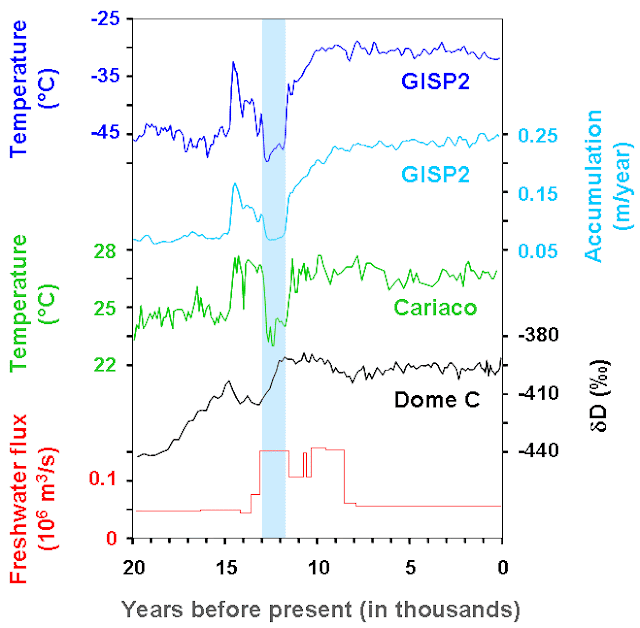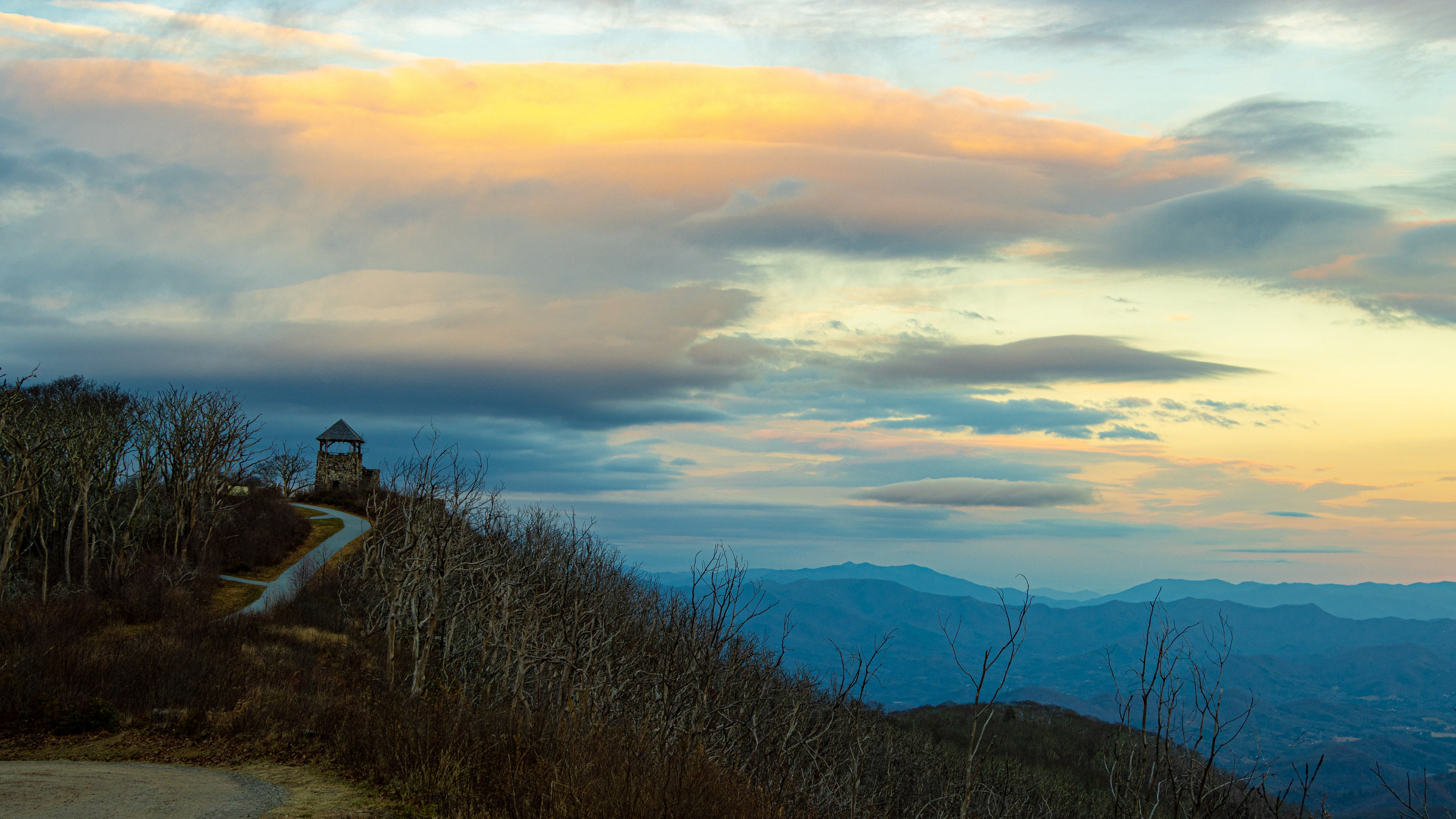The Younger Dryas and Abrupt Climate Changes

We are often conditioned to think climate changes that occur naturally are always slow and gradual. However, the geologic evidence we have shows that there major exceptions to this general rule. Perhaps the most widely-cited is the onset of the Younger Dryas - a well known abrupt climate change in which temperatures changed rapidly, perhaps by 10°C in a few decades, with completely natural causes. The episode is most easily identified in the GISP2 Greenland ice core record. According to the ice core record, cooling began about 14,500 years ago, followed by an abrupt cooling event about 13,000 years ago. That cooling period ended just as abruptly 11,500 year ago, and recovery from the last glaciation continued into the Holocene. Abrupt shifts in temperatures in agreement with these time frames were also seen in other places around the globe, including the Cariaco Basin in Venezuela and varved lake sediments in Europe. This raises a couple interesting questions: 1) what caused the abrupt...





